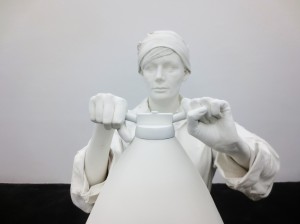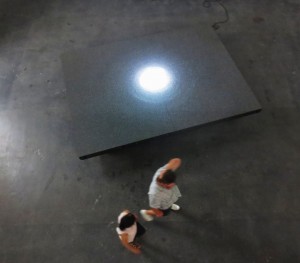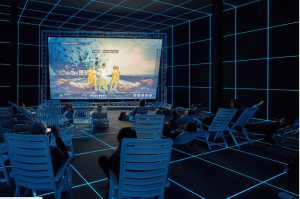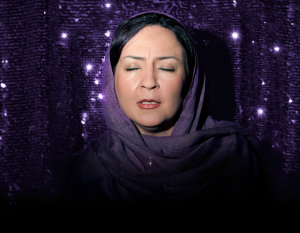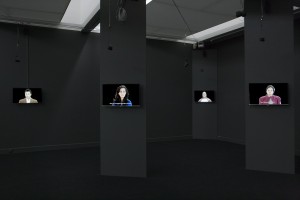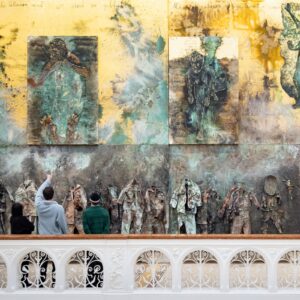There are places in the world which invite fiction, imaginative answers and scientific confusion. The “Zona del Silence” or “Mapimí Silent Zone” in Mexico is one of these locations that forces us to question the fundamental foundations of our understanding of the world. Due to a powerful magnetic field across the territory, radio waves cannot be transmitted and the voice therefore does not travel through a walkie-talkie, hence, “Zona del Silence”. Properties of the zone were discovered in 1970, when US military base launched a missile which lost control within the area and landed in the middle of the desert. Debate, experiments and theories have all attempted to place the “Zona del Silence” within conventional terms, yet it remains an enigma.
In a solo exhibition of Melik Ohanian’s work titled Stuttering at the Centre Régional d’art Contemporain Languedoc-Roussillon à Sète (CRAC) in France, one work captured the imagination to the highest degree. In A Territory of No Event (2007) the artist frames a series of photographs of the “Zona del Silence” desert area with texts which narrate the visual, fictional and scientific traits of the zone. The photographs are lit directly by a powerful spotlight which makes the white on white embossed texts beneath the photographs impossible to read. The texts can only be read by using your body to cast a shadow across it; blocking out the projected light allowing the words emerge from the page. Ohanian somehow translates the inability to hear into an inability to read, yet allows a loophole in giving us our own body to act as a shadow and a tool, to provide a window into the narratives.
The narrative texts have been gleaned by the artist and are all legends attached to the territory which blur the lines between fact and fiction. From extra-terrestrial beings and malfunctioning devices to unanswered questions, the photographs eerily illustrate the emptiness and surreality of the Zone. A penny-leaf-shaped cactus thrives in the arid atmosphere, a portrait of a pair existing in fear or awe, an overcast sky beneath which formulates a thick pink smoke and a gravelled stage which extends for miles.
The whole exhibition is a neat survey of Ohanian’s work from the past decade with highlights including his video produced for the Sharjah Biennial, DAYS, I See what I Saw and what I will See (2011) and the sculpture Concrete Tears (2006/2011) which both explore the economy of ethnicity across the world. His object based work looks into history, which is often painful, in an oscillation between the general and the specific. He moves from personal accounts to historical overviews, from the magnetic field of a desert to a planet in orbit, a reminder of the larger game that plays out far beyond our existence.
by Harriet Thorpe

